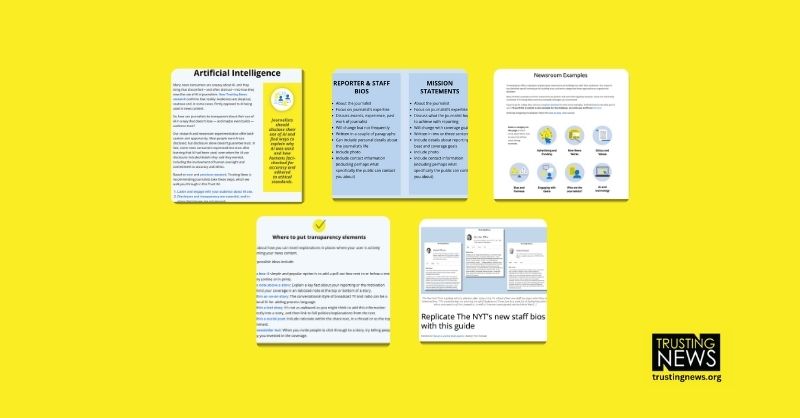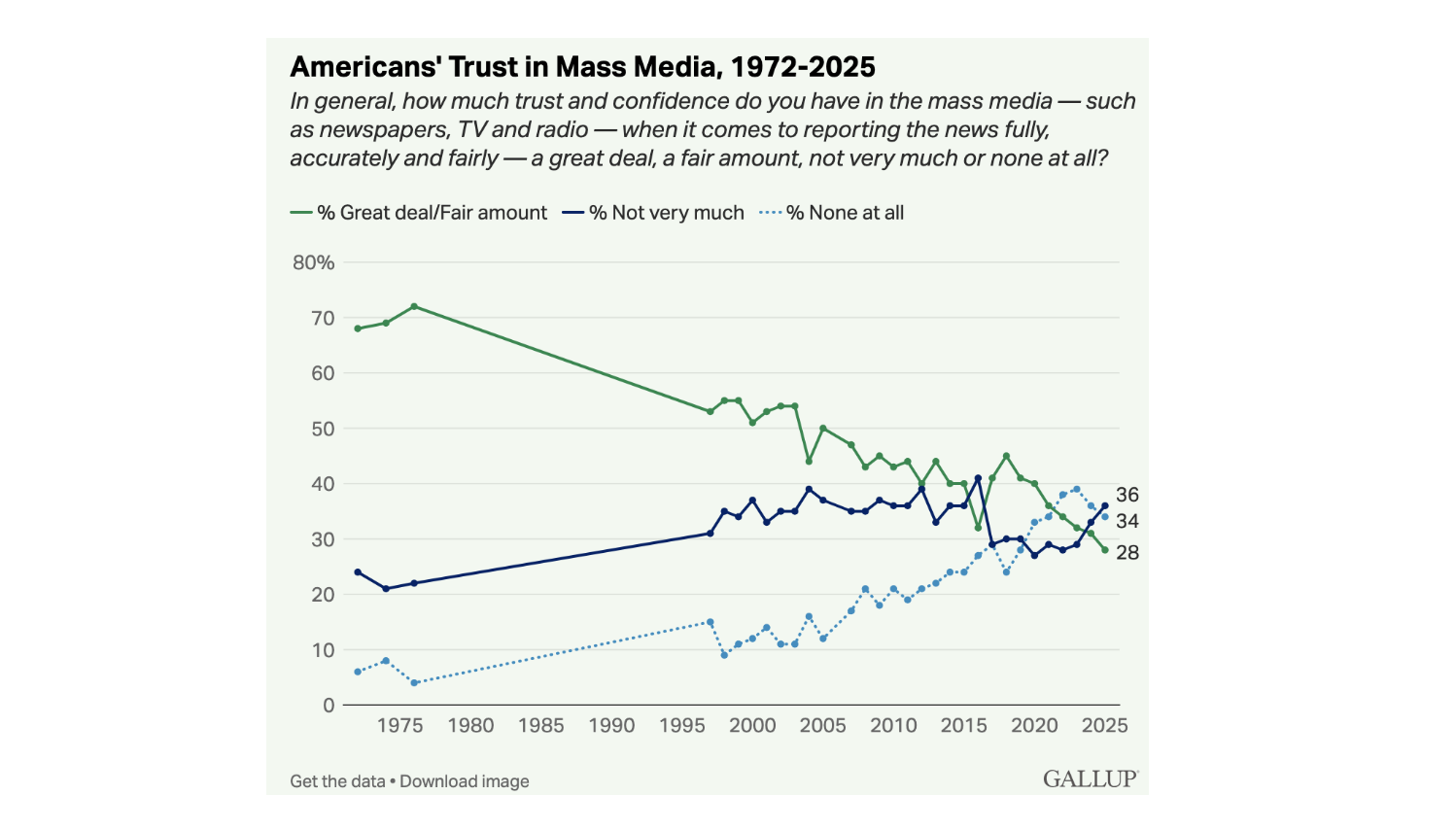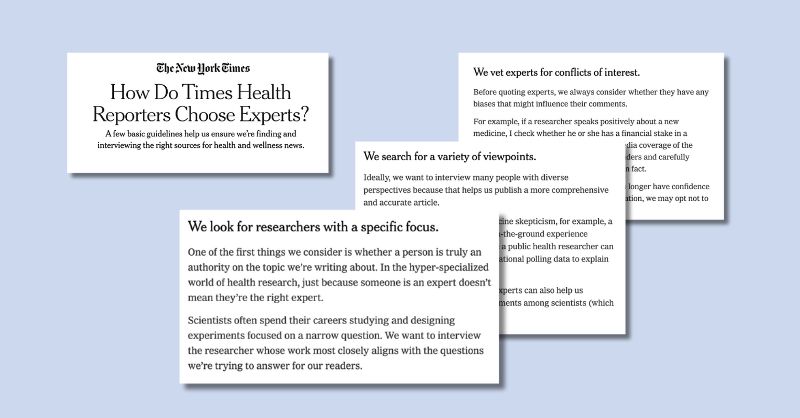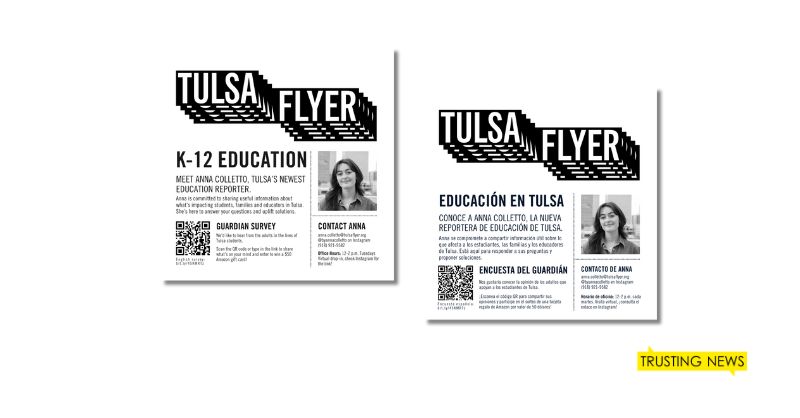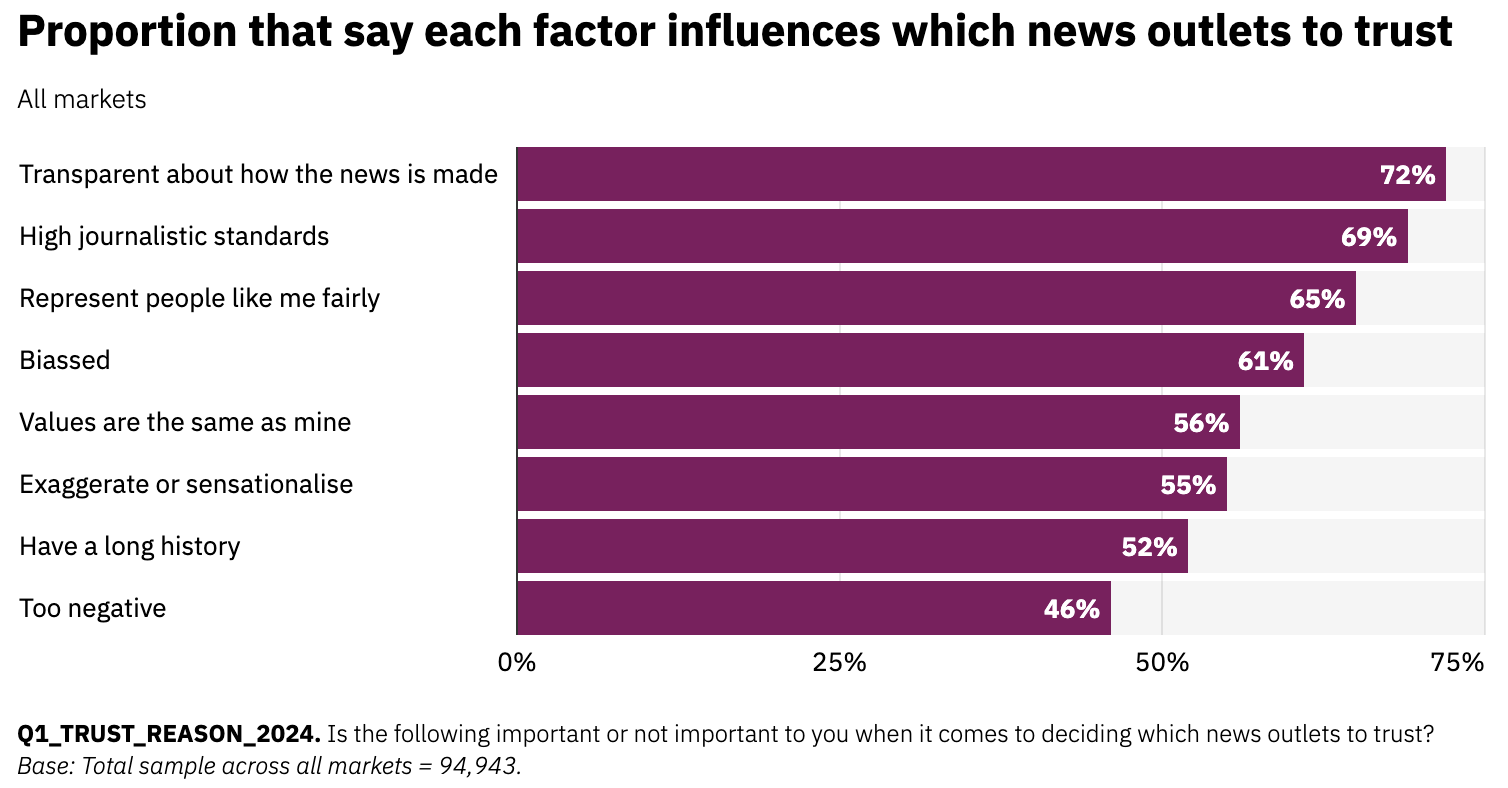
New research from the annual Reuters Digital News Report highlights factors that influence people’s trust in news. According to the report, transparency and fairly reflecting communities in coverage are critical when it comes to being seen as a trusted news source. The study focused on eight specific factors known to affect trust, chosen by Reuters […]
Act on on Reuters latest trust research in these 3 ways
New research from the annual Reuters Digital News Report highlights factors that influence people’s trust in news. According to the report, transparency and fairly reflecting communities in coverage are critical when it comes to being seen as a trusted news source.
The study focused on eight specific factors known to affect trust, chosen by Reuters from prior research. They then asked people how important or unimportant they were in deciding which news outlets to trust.
While answers varied between the 47 different markets and countries researchers surveyed, the top three factors listed below — transparency, high standards, and representing people fairly — were factors that, across the board, people highlighted as being important when it comes to determining if a news outlet seemed trustworthy.

One of our goals at Trusting News is to distill research into actionable steps for journalists. So in today’s newsletter, we’re focusing on three factors that people said influence whether or not they trust news content and sharing tips for how journalists can get credit for being transparent, having high standards and representing people fairly.
3 strategies to address these trust factors
1. Get transparent about how news is made
Transparency was the highest-rated factor in this study, with 72% of respondents saying it was important to them.
The good news is we know this aligns with journalists’s values as well: In our last community survey in 2022, transparency was one of the top-ranked topics when we asked journalists what felt important to them.
Since Trusting News started in 2016, we’ve prioritized investing in research around transparency and have continually found that when journalists give explanations and insight into the reporting process, it helps improve people’s trust in news organizations.
There’s a whole lot we wish journalists would get transparent about — like explaining ownership and how journalism is funded; how journalists decide what’s worthy of being covered; or how reporters decide who to use as a source.
But we recommend you start by pulling back the curtain on your day-to-day work — partly because that’s where people are most often engaging with your content.
How to do this?
- Examine anticipated questions. You don’t have to do this with every story, just focus on your most important coverage. Think about how you could answer questions like … why are you covering a story? How are you covering a story? And what steps have you taken to make sure your reporting process is fair?
- Answer those questions publicly. We’re big fans of injecting transparency into the places where you already have people’s attention, instead of relying on a separate editor’s column or behind-the-scenes story. (And this research suggests it’s most effective that way, too.)
Our Transparency Trust Kit walks you through this process and has a lot of examples of how newsrooms are doing this.
2. Explain your high journalistic standards
Similar to transparency, we know the newsrooms and journalists we work with operate with very high standards. They are incredibly thoughtful and careful about how they do their work — which words they choose, how they frame a story, and what voices they include.
But remember good intentions do not equal automatic trust — much of how journalists operate is unknown by our communities. We won’t get credit or be seen for operating with high standards unless we’re getting on the record about it.
That can look like regularly pointing to ethics policies, explaining your mission and sharing those behind-the-scenes decisions. Start here with our Ethics Trust Kit — it walks you through step-by-step how to do this, and points to suggested language you can use to talk about your ethics.
By regularly sharing your mission and standards, you’re inviting your community to hold you accountable to the standards you have set. You’ll also get credit for being thoughtful and careful about your work.
3. Represent people fairly
Many communities and groups of people feel they are not accurately reflected and represented in news coverage. And we know groups that feel ignored or misrepresented in the news also tend to have lower levels of trust in news.
We’ve spent a lot of time alongside partner newsrooms trying to understand the perspectives of people with low trust in news. Overall, we’ve found some common themes:
- People feel like news coverage overgeneralizes and flatters their identity
- People feel like coverage often leaves them out
- People feel like journalism isn’t made for or by people like them
The first step to remedying this is to be in regular communication with your (current and desired) audience. We can’t work to solve the problem if we don’t have a good sense of who we are leaving out and what we’re getting wrong.
We have a community interview guide to help journalists have these types of informative conversations with their community. After you have those conversations, work to implement your findings into your daily coverage. That can look like:
- Adjusting your coverage and talking publicly about how, and why, you’re doing so.
- Avoiding generalizations and using catch-all labels to describe groups of people, their thoughts, and their values.
- Diversifying who you talk to. (Remember that only 21% of people have reported having talked to a journalist, and that number goes down the less rich, old, white, and educated someone is.)
- Diversify your staff and avoid being an echo chamber. We have a hiring guide to help, and a newsroom culture program called Dimensions of Difference that dives into this.
The political divide worth paying attention to
This research confirms much of what we’ve known about levels of trust among certain groups of people: Those who are younger, lower-income, and less-educated tend to trust the news less.
Journalists also often typically think of distrust in news in terms of political divides — those who lean right have historically reported lower trust in news than independents and those who lean left.
But Reuters found it mattered less how someone identified politically or what their age or income levels are. They found trust in news was more dependent on whether someone was politically engaged or not. (This supports previous research we’ve shared on how the divide in America may be between political junkies and those who are politically disengaged.)
From the researchers: “For a large minority of the public with a distant relation to politics — a fifth of our respondents don’t know where they stand in conventional political terms — trust in news is much lower, many of them are less clear about what might help engender trust, and their connection with news is generally more precarious. The same goes for the overlapping group of respondents who are not interested in politics — more than a third.”
The challenge, as researchers put it, will be convincing people that the news is “engaging, interesting, and valuable enough to spend time with” — a mounting problem as this research also found news avoidance continues to trend up.
With 39% of people reporting sometimes or often avoiding news, our team at Trusting News is prioritizing better understanding news avoiders and finding solutions for how journalists can make their news feel more accessible, relevant and engaging.
We recently published a whole series on news avoidance:
- How to learn about news avoiders in your community
- How to talk to news avoiders about the goals and mission behind your journalism
- How to adapt your products and content for news avoiders
If you’re interested in this work, we’d love to connect with you! Reach out to our team on LinkedIn, X or email at info@trustingnews.org.
At Trusting News, we learn how people decide what news to trust and turn that knowledge into actionable strategies for journalists. We train and empower journalists to take responsibility for demonstrating credibility and actively earning trust through transparency and engagement. Subscribe to our Trust Tips newsletter. Follow us on Twitter and Facebook. Read more about our work at TrustingNews.org.

Project manager Mollie Muchna (she/her) has spent the last 10 years working in audience and engagement journalism in local newsrooms across the Southwest. She lives in Tucson, Arizona, where she is also an adjunct professor at the University of Arizona’s School of Journalism. She can be reached at mollie@trustingnews.org and on Twitter @molliemuchna.
